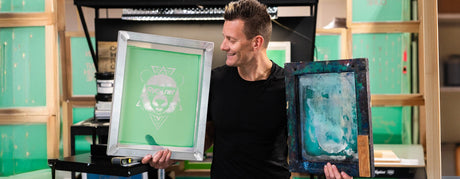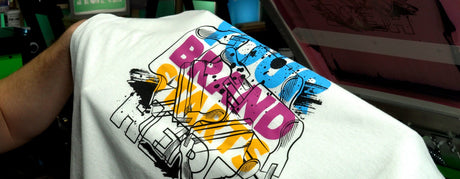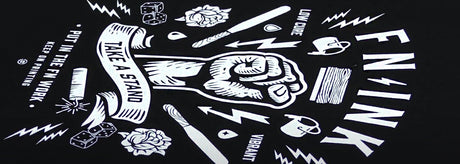
5 Common Mistakes New Screen Printers Make (and How to Fix Them)
Starting in screen printing is exciting—but it’s easy to hit some bumps early on. Whether you’re printing out of a garage or setting up a side hustle, there are a...
Free Shipping in the Con. US Learn More

Starting in screen printing is exciting—but it’s easy to hit some bumps early on. Whether you’re printing out of a garage or setting up a side hustle, there are a...

Hey screen printers! In this video, Darryl is going to walk you through the process of how to register your screens accurately and fairly simply using some unique tips. Let's...

SIM Process Separations might be one of the hardest things to do well in screen printing. Luckily, we have good news! We’re sharing the secrets to achieving photo-realistic screen prints...

Our How to Screen Print with a Kit: 250 Edition Online Course isn't just about learning; it's about transforming your passion into a successful brand. Join us, and let's make...

Ever looked around at your walls and thought “This could use some pizzazz?” Screen printing professional Jamie is with you. The walls of her print studio were bland and boring....

Emulsion remover removes emulsion. Seems simple, right? This chemical reclaims stencils faster with a concentrated emulsion remover solution. The chemistry breaks down emulsion when applied to a screen, and can be used in...

Each printer has their own unique story of why they got into screen printing. Some wanted to start their own clothing line. Others found it as a way to make...

Figuring out exposure times is one of the most difficult tasks in screen printing. If you're struggling, you're not alone. The best thing you can do is invest in a 21-Step...

Printing white ink on black shirts is a popular design combination. For this design choice to be most effective, the ink needs to be clean and bright. For the best results, printers...

Soft hand prints are best achieved with water-based ink but can be done with plastisol ink as well. Between the inks you choose to use, the garments you're printing on, to the...

Curing your prints is one of the last steps of the screen printing process, but it is one of the most important steps. Ink needs to be cured properly so...

Not all emulsions respond the same when coating screens: some emulsions require adjustments in pressure and speed, depending on the emulsion thickness and the type of mesh you're working with on your...

Need some extra cash? Want to diversify your income? Starting a side hustle is a great way to earn some extra money while doing something you love. Screen printing is...